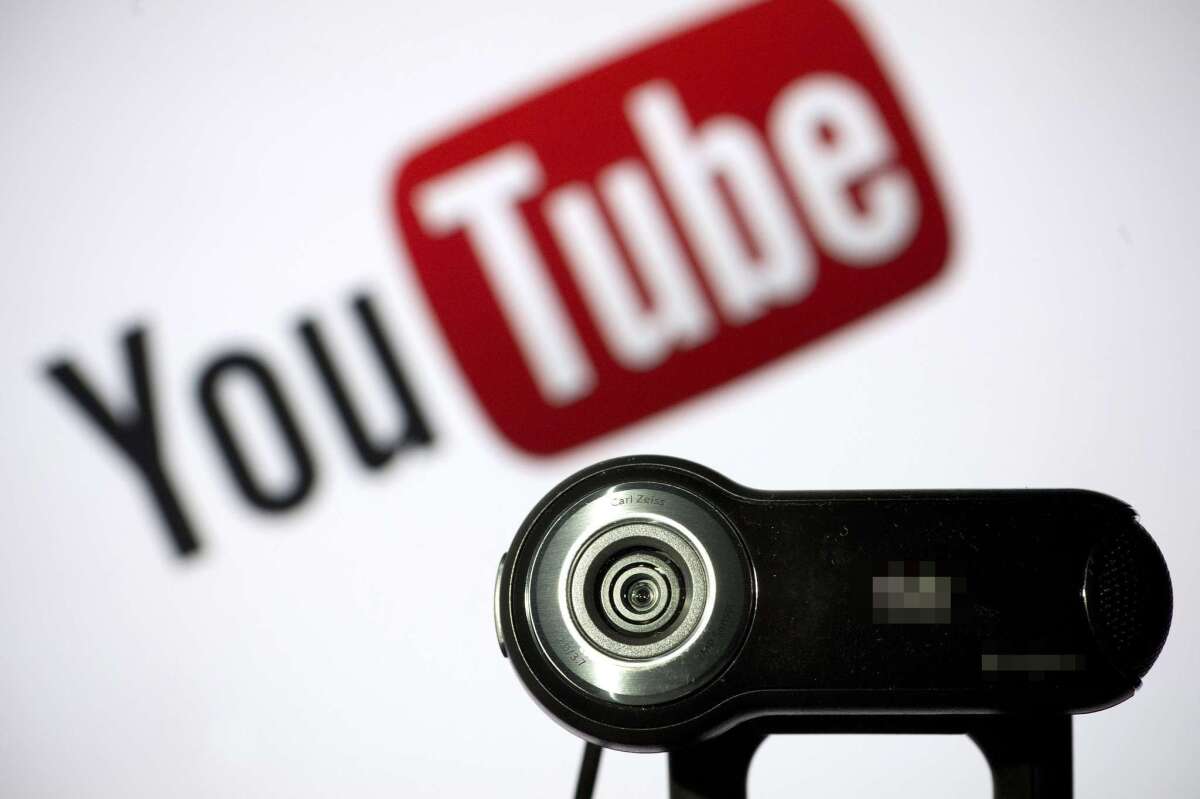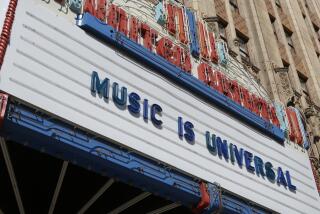Audiam helps artists get paid from plays of their songs on YouTube

Many musicians and wannabe stars have enjoyed posting on YouTube their own versions of singer-songwriter Jason Mraz’s first international hit, “I’m Yours.”
Trouble was, Mraz had no quick and easy way to find those versions and collect royalties. Now he may have found a solution.
Audiam Inc., which launched overseas last month and in the U.S. on Wednesday, searches YouTube for people using Mraz’s copyrighted songs and collects part of the advertising revenue generated by those clips, under an agreement with YouTube. Audiam takes 25%, and the rest goes to the artists.
PHOTOS: Hollywood backlot moments
And for those YouTube sites without ads, Audiam works with the Google-owned streaming video site to place ads on those sites to start collecting revenue, said Jeff Price, who formed the company with partner Peter Wells.
“YouTube has about 30 billion views a month of videos with music in them, and only about half of them are generating revenue,” Price said. “The artist needs a solution. They need an easy button for YouTube, and that’s what we give them.”
Robert Levine, a former executive editor at Billboard who wrote the book “Free Ride,” said most artists who use Audiam will generate only a handful of cash, but it could be a successful business for Audiam if it gets a lot of customers. Besides, Levine said, making a little money from YouTube is better than seeing no revenue at all.
“When you have a technology like YouTube that makes it possible for anyone to make content, I think it’s appropriate to help people get paid for it,” Levine said. “This could be part of it.”
PHOTOS: Highest paid media executives of 2012
YouTube, which garners about 1 billion unique visitors a month and 100 hours of video uploaded every minute, makes money when a visitor clicks on ads or watches commercials on videos posted on the site. And those who upload videos can get paid by authorizing YouTube to place ads on their clips.
But for musicians, it’s hard to keep track of when other people use their songs, compositions and recordings, Price said.
Scott Schreer, the composer behind the “NFL on Fox” theme, has written scores of instrumental pieces that people use for free in their videos. With Audiam, he now can collect money from videos that use any of his 2,000 songs, such as the slide guitar-fueled rock piece “Misfit.”
In his first four weeks using Audiam, he said, the service collected about $40,000 from YouTube videos using his music.
“It’s a fantastic opportunity,” Schreer said. “It gives you the ability to rely on the power of your copyrights.”
INTERACTIVE: Viral YouTube videos of 2012
This week, Audiam expanded its searches for use of copyrighted material to publishers and record labels. And it now provides artists with a list of videos that use their songs and the number of views those videos received.
Audiam also helps artists create ad revenue for their own online videos, without charging them its 25% fee.
“Ultimately this is about exploiting copyright to make money and raise your profile,” Price said.
In 2006, Price and Wells co-founded Tunecore Inc., a company that helps independent artists sell their music online through iTunes, Amazon, Spotify and other services. Price, the chief executive, and Wells left the firm a year ago in a dispute with directors.
More to Read
From the Oscars to the Emmys.
Get the Envelope newsletter for exclusive awards season coverage, behind-the-scenes stories from the Envelope podcast and columnist Glenn Whipp’s must-read analysis.
You may occasionally receive promotional content from the Los Angeles Times.











